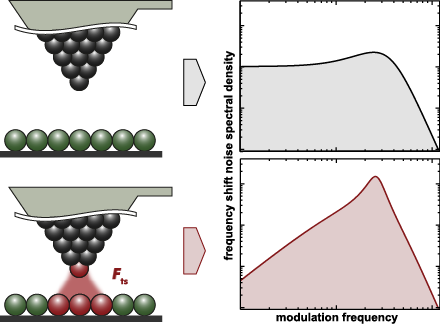Search results
Search for "amplitude noise" in Full Text gives 7 result(s) in Beilstein Journal of Nanotechnology.
Effective sensor properties and sensitivity considerations of a dynamic co-resonantly coupled cantilever sensor
Beilstein J. Nanotechnol. 2018, 9, 2546–2560, doi:10.3762/bjnano.9.237

- amplitude noise may be amplified due to the co-resonance and how that may affect the detection limit. In the following, the derivation of the effective properties based on the coupled harmonic oscillator model will be outlined and the implication on sensitivity and detectability will be discussed. Resonance
- the excitation white thermal noise due to the resonance characteristics of the coupled harmonic oscillator system. Integration of the squared thermal oscillator noise density from Equation 32 over the complete frequency range [0,∞] and relating that to the expression for the mean square amplitude
- noise obtained from the equipartition theorem (Equation 31 for the coupled harmonic oscillator) allows to derive the excitation white thermal noise density according to: However, this involves solving the integral for the squared transfer function G2(f). While an antiderivative exists for the single
Material discrimination and mixture ratio estimation in nanocomposites via harmonic atomic force microscopy
Beilstein J. Nanotechnol. 2017, 8, 2771–2780, doi:10.3762/bjnano.8.276

- thermal calibration method [39]. For amplitude calibration the inverse optical lever sensitivity in units of nm/V was determined via a noncontact method proposed by M. J. Higgins et al. [36]. The noise level of the AFM optical detector was less than 60 μV, which corresponds to an amplitude noise of
A review of demodulation techniques for amplitude-modulation atomic force microscopy
Beilstein J. Nanotechnol. 2017, 8, 1407–1426, doi:10.3762/bjnano.8.142

- , which significantly limits their practical bandwidth. At frequencies approaching DC, all methods, including the low-pass filtered white noise process, approach a constant value due to digital noise, residual DC-offsets and 1/f noise in the signal. This experiment highlights that amplitude noise needs to
Multimodal cantilevers with novel piezoelectric layer topology for sensitivity enhancement
Beilstein J. Nanotechnol. 2017, 8, 358–371, doi:10.3762/bjnano.8.38

- in each cantilever. (i)–(l) The responses from Vi to sensor output Vd. (b)–(d), (f)–(h) and (j)–(l) show higher resolution plots of the modes. Amplitude noise density spectra of the output voltage Vo for the reference cantilever C1 and optimized cantilevers C2–C4. (a) Voltage driven instrumentation
Noise in NC-AFM measurements with significant tip–sample interaction
Beilstein J. Nanotechnol. 2016, 7, 1885–1904, doi:10.3762/bjnano.7.181

- amplitude noise if there are significant tip–sample interactions. The total noise power spectral density DΔf(fm) is, however, not just the sum of these noise contributions. Instead its magnitude and spectral characteristics are determined by the strongly non-linear tip–sample interaction, by the coupling
- : amplitude noise; cantilever stiffness; closed loop; detection system noise; frequency shift noise; non-contact atomic force microscopy (NC-AFM); Q-factor; spectral analysis; thermal noise; tip–sample interaction; Introduction Non-contact atomic force microscopy (NC-AFM) [1][2] is an unmatched surface
- controller is described by the frequency response Hac(f). Noise in the amplitude signal is characterised by the amplitude noise power spectral density DA(f). The PLL demodulator determines the frequency shift Δf = fr− f0, which is the difference between the cantilever resonance frequency fr in the presence
Surface topography and contact mechanics of dry and wet human skin
Beilstein J. Nanotechnol. 2014, 5, 1341–1348, doi:10.3762/bjnano.5.147

- 50× magnifications (Figure 2). The data obtained at low magnification are considerably discontinuous. Exact height could not be defined in white areas, Figure 2a. Besides, a speckle-like high-amplitude noise appear at low magnification. At high magnification the height may be properly defined almost
Noise performance of frequency modulation Kelvin force microscopy
Beilstein J. Nanotechnol. 2014, 5, 1–18, doi:10.3762/bjnano.5.1




























































![[Graphic 32]](/bjnano/content/inline/2190-4286-7-181-i73.png?max-width=637&scale=1.18182) wit...
wit...

![[Graphic 34]](/bjnano/content/inline/2190-4286-7-181-i75.png?max-width=637&scale=1.18182) wit...
wit...


































